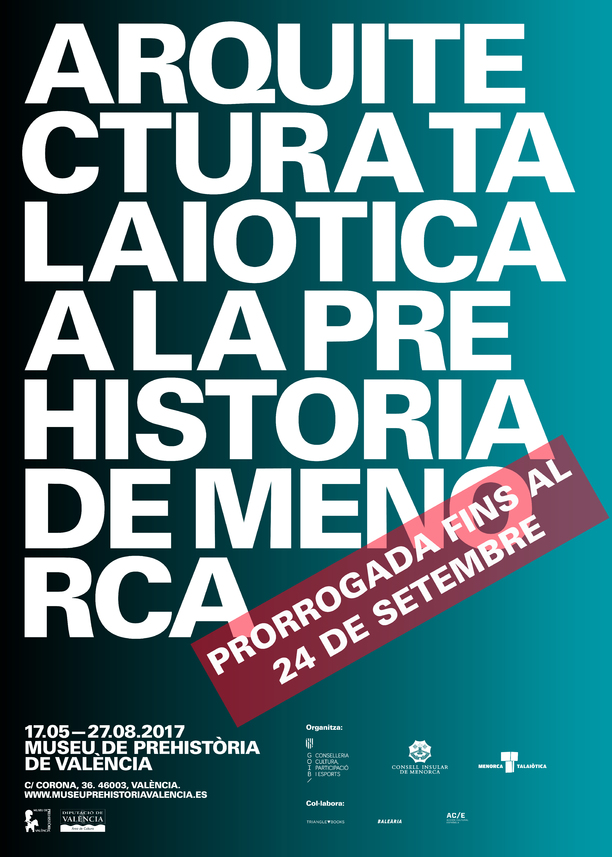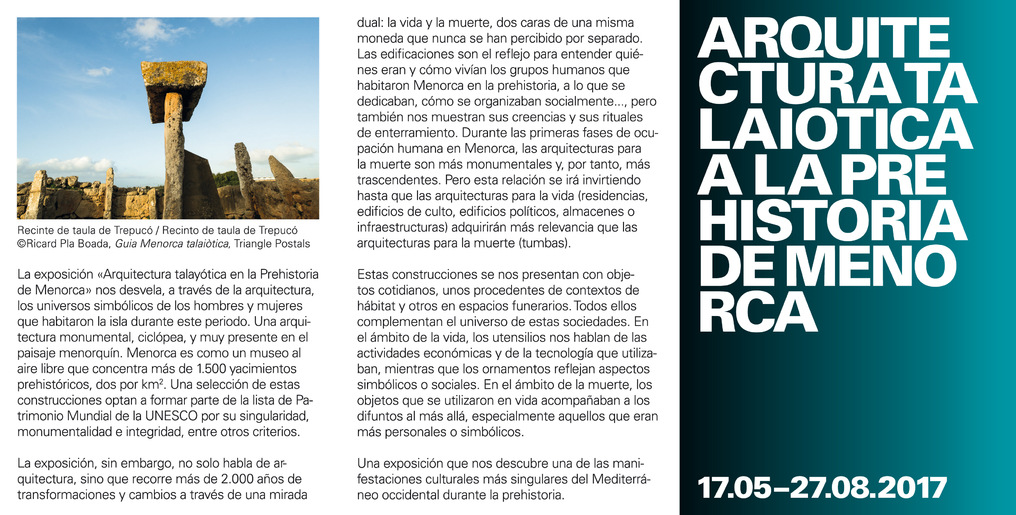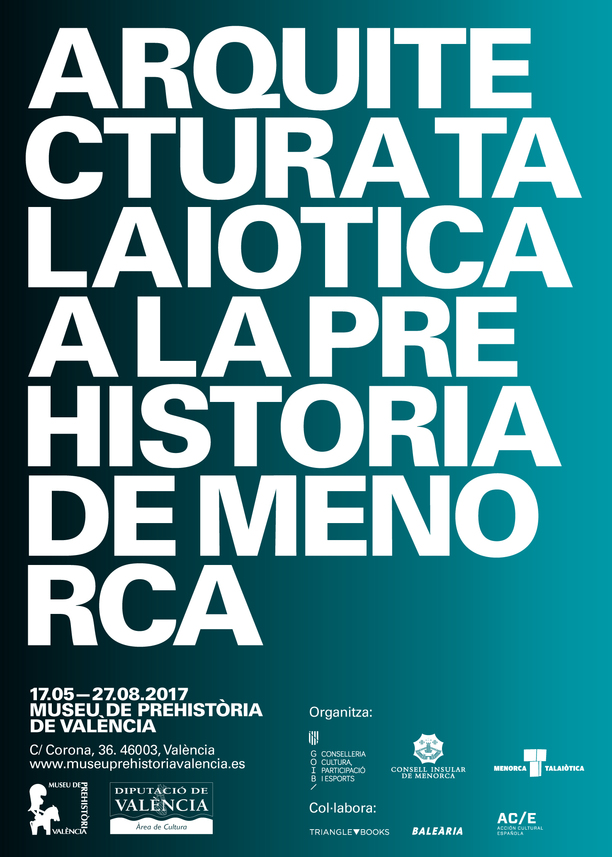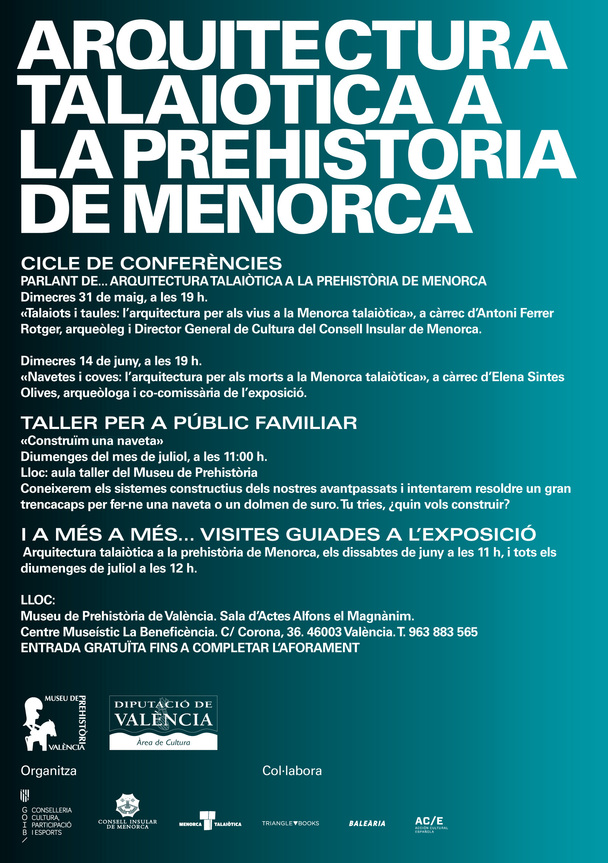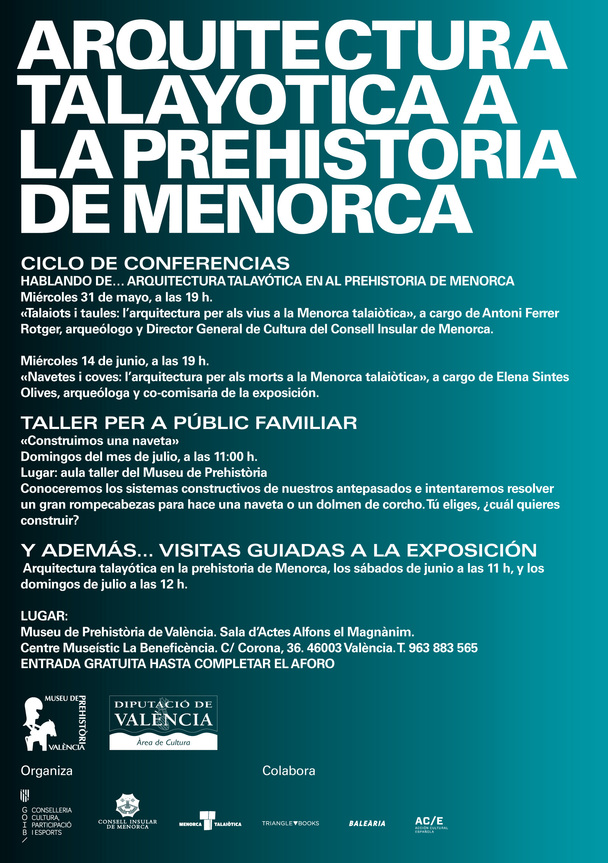Talaiotic Architecture in Menorca's Prehistory
- 16-05-2017 - 24-09-2017
16 May to 27 August 2017
The buildings featured in the “Talaiotic Architecture in Menorca’s Prehistory” exhibition gives us insight into the symbolic universes of the men and women who inhabited the island during this period. This is a monumental architecture, featuring cyclopean masonry, which is still very much present in the Menorcan landscape. Menorca is like an open-air museum with more than 1,500 prehistoric sites, two per every square kilometre. A selection of these buildings have been granted UNESCO World Heritage status in recognition of their distinctiveness, monumentality and completeness, among other qualities.
In addition to architecture, the exhibition also considers more than 2,000 years of transformation and change through the dual perspective of life and death, two inseparable sides of the same coin. The buildings reflect who the inhabitants of prehistoric Menorca were, how they lived, what they did for a living and how their societies were structured, but they also tell us about their beliefs and burial rituals. The death-related buildings constructed during the first phases of human occupation in Menorca are the largest and consequently most significant. However this relationship is gradually reversed until life-related buildings (homes, places of worship, political buildings, storehouses and infrastructures) become more important than death-related buildings (tombs).
These buildings present us with everyday objects, some from living spaces and others from funerary contexts. All these objects complement the universe of these societies. In the sphere of life, the utensils discovered tell us about the economic activities and technology of the early Menorcans, while the ornaments reflect symbolic or social aspects of their existence. In the sphere of death, the objects used in life accompany the deceased to the hereafter, particularly the most personal and symbolic items.
An exhibition which allows us to discover one of the most singular manifestations of culture in the western Mediterranean during prehistoric times.
The buildings featured in the “Talaiotic Architecture in Menorca’s Prehistory” exhibition gives us insight into the symbolic universes of the men and women who inhabited the island during this period. This is a monumental architecture, featuring cyclopean masonry, which is still very much present in the Menorcan landscape. Menorca is like an open-air museum with more than 1,500 prehistoric sites, two per every square kilometre. A selection of these buildings have been granted UNESCO World Heritage status in recognition of their distinctiveness, monumentality and completeness, among other qualities.
In addition to architecture, the exhibition also considers more than 2,000 years of transformation and change through the dual perspective of life and death, two inseparable sides of the same coin. The buildings reflect who the inhabitants of prehistoric Menorca were, how they lived, what they did for a living and how their societies were structured, but they also tell us about their beliefs and burial rituals. The death-related buildings constructed during the first phases of human occupation in Menorca are the largest and consequently most significant. However this relationship is gradually reversed until life-related buildings (homes, places of worship, political buildings, storehouses and infrastructures) become more important than death-related buildings (tombs).
These buildings present us with everyday objects, some from living spaces and others from funerary contexts. All these objects complement the universe of these societies. In the sphere of life, the utensils discovered tell us about the economic activities and technology of the early Menorcans, while the ornaments reflect symbolic or social aspects of their existence. In the sphere of death, the objects used in life accompany the deceased to the hereafter, particularly the most personal and symbolic items.
An exhibition which allows us to discover one of the most singular manifestations of culture in the western Mediterranean during prehistoric times.

